By Kathleen Patricia Thrane
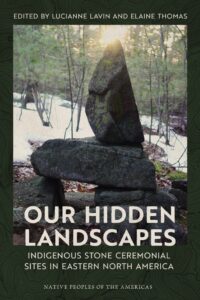 This excerpt from Chapter 14, “Mythologies of Light and Cast Shadow Within Northeastern Stone Chambers,” including Figures 14.1–14.4, from Our Hidden Landscapes: Indigenous Stone Ceremonial Sites in Eastern North America, edited by Lucianne Lavin and Elaine Thomas (Arizona Board of Regents, 2023) is reprinted by permission from the University of Arizona Press. The complete chapter features analysis and cites sources that have not been included in this excerpt due to space limitations. Italicized text indicates commentary added by Connecticut Explored.
This excerpt from Chapter 14, “Mythologies of Light and Cast Shadow Within Northeastern Stone Chambers,” including Figures 14.1–14.4, from Our Hidden Landscapes: Indigenous Stone Ceremonial Sites in Eastern North America, edited by Lucianne Lavin and Elaine Thomas (Arizona Board of Regents, 2023) is reprinted by permission from the University of Arizona Press. The complete chapter features analysis and cites sources that have not been included in this excerpt due to space limitations. Italicized text indicates commentary added by Connecticut Explored.
This [excerpt]documents the ancient art of light and cast shadow at [a]stone [chamber in southeastern Connecticut]. The cultural symbols that appear during the winter solstice and equinoxes are of mythological figures from northeastern Indigenous oral traditions and the mound-building cultures in the Eastern Woodlands. These examples of Indigenous cultural astronomy and architectural design reveal the intentionality of the structures as celestial calendars and ceremonial monuments.
[. . .]
In northeastern Native American cultures, the sun is a deity and significant to creation stories, ritual, calendars, monuments, and agriculture. In Roger Williams’s 17th-century book on Northeastern Algonquin beliefs, he describes the sun as a divine power followed by the moon, and 37 gods that include animals, birds, fishes, plants, rocks, the elements, the sea, the cardinal directions, and the winds. Williams describes how Native Americans “point with the hand to the Sunne, by whose highth they keepe account of the day, and by the Moone and Stars by night, as wee doe by clocks and dials, &c.” (Williams 1643).
Many northeastern tribal names reference the dawn, the east, and light. In Trumbull’s editorial notes to Williams’s A Key into the Language of America, he states that the Algonquin word for sun, kesuk, is derived from the phrase “to give life” (Williams 1866).
[. . .]
Archaeological research at stone chambers has mostly occurred in summer, when chambers are dark under the tree canopy—perhaps why cultural light and cast shadow imagery is not generally known. Knowledge of the cultural imagery may have been lost over time or restricted. A tribal historian to whom the author spoke was unaware of the light images but mentioned that traditionalists would know more. A traditionalist and medicine man said the cultural representations are not art; they are more than that: they are spiritual.
Chamber I
Chamber I is in southeastern Connecticut. It has a small subterranean oval interior with an earthen mound above it. The chamber is part of a larger landscape with multiple chambers, stone constructs, walls, rocky ledges, and large boulders. The site is within an upland forest near a former cranberry bog.
Figure 14.1 shows a light image of a waterbird, which appeared in Chamber I at 9:09 a.m. on the winter solstice in 2017.
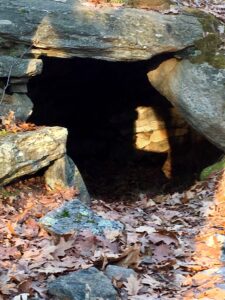 Figure 14.2 shows a light image of a raptor in profile within the stone chamber at 8:15 a.m. on the winter solstice in 2017. Images of raptors and other bird effigy artifacts, some carved on Indigenous pipes and bowls, are well known in the Northeast (e.g., Lavin 2013). In Algonquian-speaking cultures, raptors are identified with the supernatural “thunderbirds,” which are powerful manitous (spirits) (Johnston 1995; Speck 2018). In the iconography of the mound-building cultures in the Eastern Woodlands, raptors are associated with cultural and ceremonial beliefs, leadership (Thomas et al. 2005), shamanism, the upperworld, and the soul’s “celestial journey . . . after death” (Romain 2009).
Figure 14.2 shows a light image of a raptor in profile within the stone chamber at 8:15 a.m. on the winter solstice in 2017. Images of raptors and other bird effigy artifacts, some carved on Indigenous pipes and bowls, are well known in the Northeast (e.g., Lavin 2013). In Algonquian-speaking cultures, raptors are identified with the supernatural “thunderbirds,” which are powerful manitous (spirits) (Johnston 1995; Speck 2018). In the iconography of the mound-building cultures in the Eastern Woodlands, raptors are associated with cultural and ceremonial beliefs, leadership (Thomas et al. 2005), shamanism, the upperworld, and the soul’s “celestial journey . . . after death” (Romain 2009).
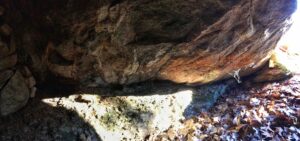 Figure 14.3 is a detail of the image in Figure 14.1. The beak resembles the extinct great auk (Pinguinus impennis), a flightless waterbird with black feathers on its back and white feathers on its breast. Several northeastern creation stories describe water birds that caught the sky woman as she fell from the sky world to earth (Bruchac 1990; Kimmerer 2013).
Figure 14.3 is a detail of the image in Figure 14.1. The beak resembles the extinct great auk (Pinguinus impennis), a flightless waterbird with black feathers on its back and white feathers on its breast. Several northeastern creation stories describe water birds that caught the sky woman as she fell from the sky world to earth (Bruchac 1990; Kimmerer 2013).
Professional anthropologist Frank Speck described the great auk as an important cultural symbol and food source to ancient Native Americans living along the Atlantic coast. The bird is “remembered among the Penobscots as one of the legendary bird chiefs” and the “hero character in one of the creation tales” (Speck 2018). Maritime Archaic burials containing auk bones are documented along North Atlantic coasts. One in Newfoundland, with 200 auk bills, is presumed to be a shaman in ceremonial regalia and dates to 2000 B.C. (Tuck 1976).
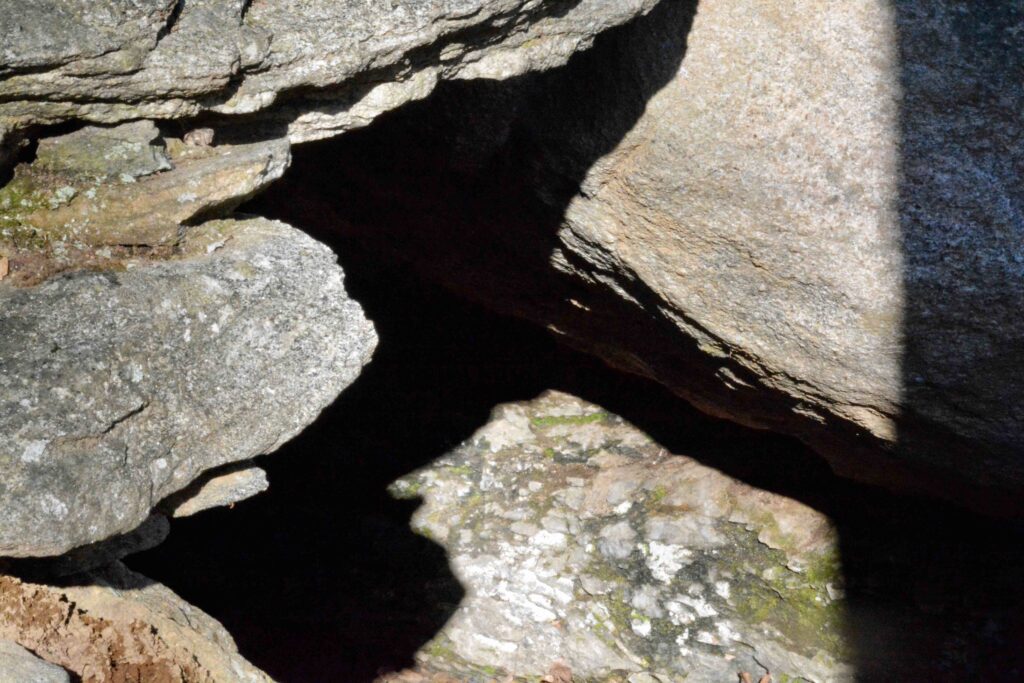 Figure 14.4 depicts another light image in Chamber I, photographed on December 18, 2018. It shows the profile of a bear. As the light moves, the bear appears to be speaking. The bear is important to the cultural and spiritual traditions of tribes in the Northeast (e.g., Hallowell 1926; Shoumatoff 1972). It is also significant in mound-building cultures (Romain 2009). This chamber has four or more light images: a raptor, an anthropomorphic figure, a water bird, and a bear. All symbols are associated with northeastern Indigenous cultural beliefs. None are associated with colonial cultural traditions.
Figure 14.4 depicts another light image in Chamber I, photographed on December 18, 2018. It shows the profile of a bear. As the light moves, the bear appears to be speaking. The bear is important to the cultural and spiritual traditions of tribes in the Northeast (e.g., Hallowell 1926; Shoumatoff 1972). It is also significant in mound-building cultures (Romain 2009). This chamber has four or more light images: a raptor, an anthropomorphic figure, a water bird, and a bear. All symbols are associated with northeastern Indigenous cultural beliefs. None are associated with colonial cultural traditions.
The Algonquian place-name (not mentioned herein) was previously interpreted as a high or rocky hill. The suffix of the place-name includes the Algonquian word for white, which is associated with light, dawn, and the east (O’Brien 2010; Trumbull 1881; Williams 1643). The philologist J. H. Trumbull wrote that Algonquian place-names in general describe a location’s topographical, historical, or natural features. The names are a synthesis of a prefix, which is adjectival, a root word, and a suffix that describes the location. The omission of a syllable can change the meaning (Trumbull 1881).
Thrane then documents a stone chamber in Vermont and the cultural symbols that appear there during the winter solstice, including a crane and a serpent. She goes on to explain how light and cast shadow imagery is created and how oral societies rely on a “visual language of symbols” to help tell their stories, much as literate societies rely on writing.
Astronomy, Mythology, and Iconography
Light and cast shadow is an ancient use of celestial light to illustrate cultural and spiritual beliefs. Many Northeastern Algonquian mythologies were first written centuries ago (Spence 1994). In oral societies, the visual arts are filled with narrative symbols used as mnemonic devices to assist the transmittal of cultural knowledge over generations (Lankford 2007b). Few Algonquian ethno-astronomies are known (Conway 1992), though there are many “astronomical beliefs encoded in myths and iconography” (Lankford 2007a). The Algonquian ceremonial calendar is known to follow celestial events (Conway 1992), and traditional Northeastern Algonquian cultures and elsewhere had highly developed astronomical skills, evident in the celestial alignments of stone chambers and their cultural representations.
Daniel Brinton writes that in many myths, “Creation itself is linked to the Dawn,” and the “Algonkian prophet builds the medicine lodge to face the sunrise; and in the name of Michabo, who there has his home, summons the spirits of the four quarters of the world” (Brinton 1868). The southeast, where the sun rises on the winter solstice, symbolizes the direction of the renewal of life. The southwest, where the sun sets on the winter solstice, symbolizes the direction of the afterlife, where the souls of all people and animals go after death, on the path of the Milky Way (Williams 1643). In Mohegan tradition, the Milky Way represents the soul’s life along the path of the sun, from east to west (Fawcett 2000).
Ceremonial or sacred spaces often connect to the sky and have a manifestation of the divine (Eliade 1964; 1987). The stone chambers are small and secluded spaces. Images in secluded areas are seen as “the resort of a chosen few, such as a religious society . . . sequestered art gives evidence of a mystical purpose” (Mallery 1972). Shamanic practices are known to enhance visual and mental visions and communication with spirits (Noll 1985). The shamanic rituals of the Mide’ wiwin, the secretive Grand Medicine Society, were practiced by all Algonquian cultures (Hoffman 2016).
Thrane explains that, unlike many northeastern tribes, the Ojibwe were able to “preserve their shamanic culture.” In the next section, she connects the light images that appear in the stone chamber to “effigies of supernatural beings” common to “northeastern mythologies and artifacts.”
Native American References to Spirits of Light and Shadow
Historical records in the Northeast mention spirits of the light and supernatural phenomena; they may describe the art of light and shadow. A Mohegan Indian informed the anthropologist Frank Speck of spirits “travelling about with lights” and “an earlier Indian belief in the association of lights with departed souls” (Speck 1928, cited in Simmons 1986). Gladys Tantaquidgeon mentions that Wampanoag elders taught her about light and dark spirit beings (Fawcett 2000; Tantaquidgeon 1930). Historical accounts mention a “ghost of light” called Cheepi in New England lore (Simmons 1986). The French Jesuit missionary Father Paul Le Jeune (1591–1664) wrote in 1634 about a Montagnais Indian from an Algonquin-speaking tribe describing “spirits of the light” and “Manitos” that were visible to Native peoples. He told Father Le Jeune that he could not believe in the European God because it was invisible (Thwaites 1897, cited in Tooker 1979).
Another colonial reference to the sun, light, and shadow is found in the writings of Connecticut-born David Brainerd (1718–1747), a missionary to Mohican and Lenape communities mainly in New York and New Jersey. In his writings, he describes a former shaman’s description of how he became a shaman:
He was admitted into the presence of a Great Man, in a world above at a vast distance from this. The Great Man, he says, was clothed with the Day; Yea with the Brightest Day he ever saw; a Day with many years, yea of everlasting continuance. . . . By the side of the Great Man . . . stood his shadow or spirit; For he us’d (Chichung) the word they commonly make use of to express that of the Man which survives the body, which word properly signifies a shaddow . . . or Spirit. . . . The Great Man ask’d him what he would chuse in life. He replied first to be a Hunter, and afterwards to be a Powwow or Diviner. Where upon the Great Man told him, he should have what he desired, and that his shadow should go along with him down to Earth and to be with him forever. . . . This spirit directed him in dreams and assured him of success in hunting. . . . This spirit came upon him in a special manner, and he was full of what he saw in the Great Man: And then, he says, he was all Light, and not only Light himself, but it was Light all around him, so that he could see thro’ men and knew the thoughts of their hearts, etc. (Brainerd 1746)
Worship of the sun and fire is related to the creation of the world when the world was dark and submerged in water. Brinton describes an Algonquian culture hero who was “generally called Michabo, The Great Light,” and many northeastern creation myths describe “a journey from beyond the sea . . . the home of the sun and of Light” (Brinton 1885). The myth of light exists in the “Light or Bright Ancestor . . . who, in some remote time, visited them from the East, and brought them their civilization” (Brinton 1885). Northeastern creation stories describe a sky world, a sky woman, and twin sons born to the daughter of the sky woman and the sun. The Twin Sons stories represent dualities of good and evil, light and darkness (Brinton 1885; Bruchac 1990; Kimmerer 2013). The Iroquois creation story has “a Tree of Light located in the center of the sky world next to a chiefs lodge” (Herrick 1995). There are also “Elves of Light” mentioned in stories of Glooscap (Spence 1994).
Thrane further contextualizes the “cultural representations” within the chambers, most notably placing them within the cultures of the Northeastern Woodlands and those of the Eastern mound-builders. She also offers comparisons to light and cast shadow images in the Americas and throughout the ancient world.
Conclusions
Celestial light imagery manifests an ancient worldview and cosmology. The prehistoric vision of the world has complex dimensions; the art of the peoples of this time uses different materials and perspectives, which is one of its defining elements. “The space conception of a period is the graphic projection of its attitude towards the world” (Giedion 1962).
Light and cast shadow is a highly developed cultural astronomy, a ritual calendar, and an annual reenactment of mythic figures from the dawn of creation. The cultural representations reveal a “cyclical regeneration of time” (Eliade 2005). The stone chambers are manifestations of ancient cosmologies, oral histories, mythic culture heroes, and connections between the sun, the sky, the earth, the underworld, and the water world. These ancient monuments are important cultural heritage sites and rare examples of Indigenous astronomy, mythology, and spirituality.
Kathleen Patricia Thrane is an artist and independent researcher of prehistoric rock art and cultural landscapes.
Works Cited
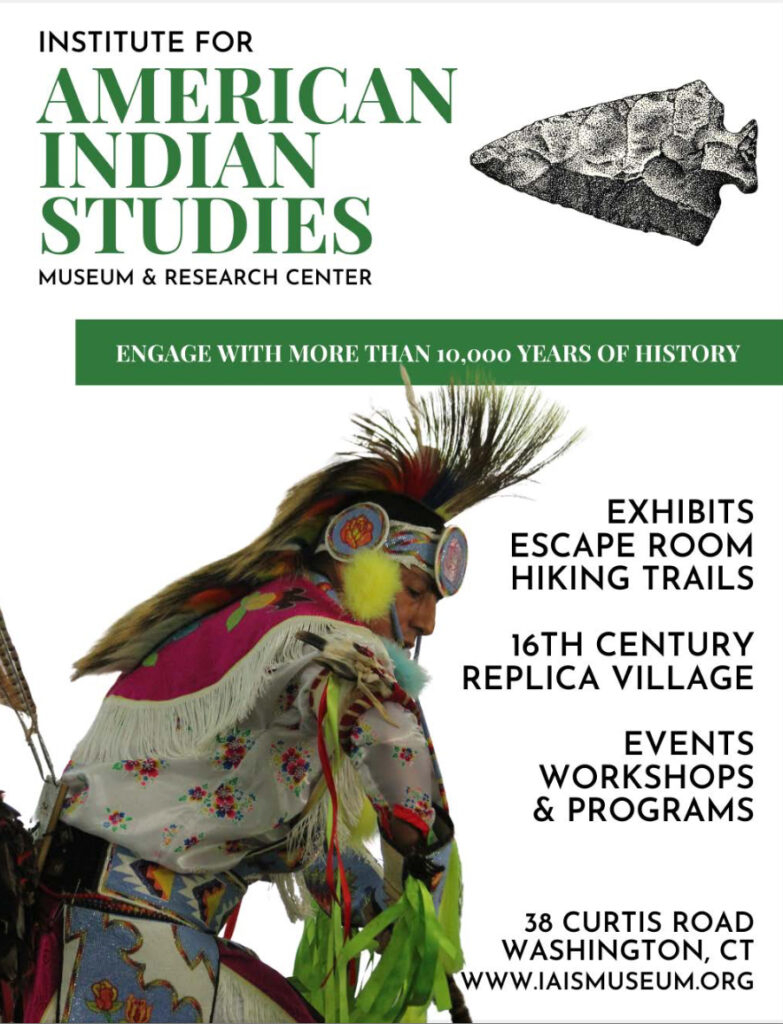 Brainerd, David. 1746. Mirabilia Dei Inter Indicos, or The Rise and Progress of a Remarkable Work of Grace Amongst a Number of the Indians in the Provinces of New Jersey and Pennsylvania. William Bradford.
Brainerd, David. 1746. Mirabilia Dei Inter Indicos, or The Rise and Progress of a Remarkable Work of Grace Amongst a Number of the Indians in the Provinces of New Jersey and Pennsylvania. William Bradford.
Brinton, Daniel G. 1868. Myths of the New World: A Treatise on the Symbolism and Mythology of the Red Race of America. Leypoldt and Holt.
———. 1885. The Lenape and Their Legends, with the Complete Text and Symbols of the Walam Olum: A New Translation and an Inquiry into Its Authenticity. D. G. Brinton.
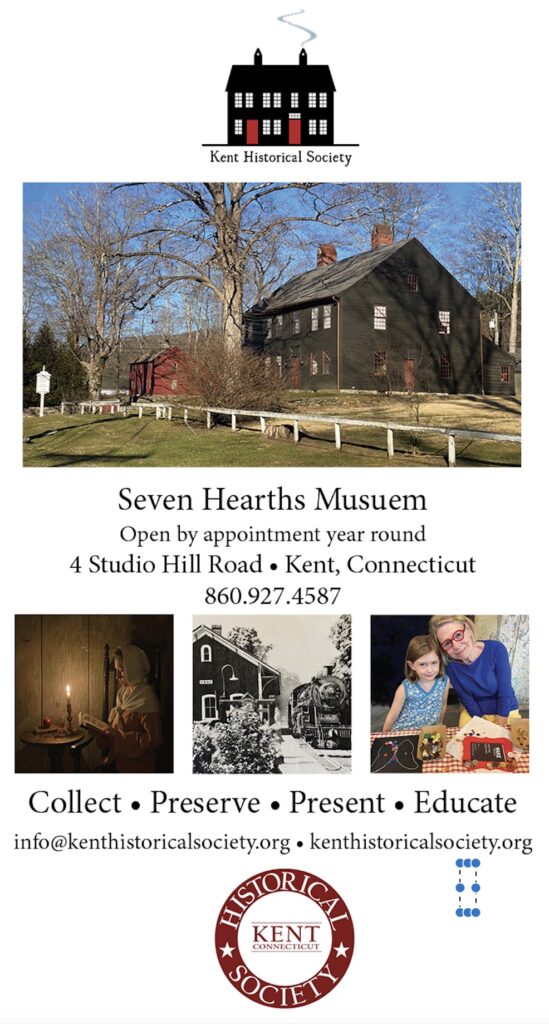 Bruchac, Joseph. 1990. Return of the Sun: Native American Tales from the Northeastern Woodlands. The Crossing Press.
Bruchac, Joseph. 1990. Return of the Sun: Native American Tales from the Northeastern Woodlands. The Crossing Press.
Conway, Thor. 1992. “The Conjuror’s Lodge: Celestial Narratives from Algonkian Shamans.” In Earth and Sky: Visions of the Cosmos in Native American Folklore, ed. Ray A. Williamson and Claire R. Farrer. University of New Mexico Press.
Eliade, Mircea. 1964. Shamanism: Archaic Techniques of Ecstasy. Princeton University Press.
———. 1987. The Sacred and The Profane: The Nature of Religion. Harcourt.
———. 2005. The Myth of the Eternal Return. Princeton University Press.
Fawcett, Melissa J. 2000 Medicine Trail: The Life and Lessons of Gladys Tantaquidgeon. University of Arizona Press.
Giedion, Sigfried. 1962. The Eternal Present: The Beginnings of Art. Bollingen Foundation.
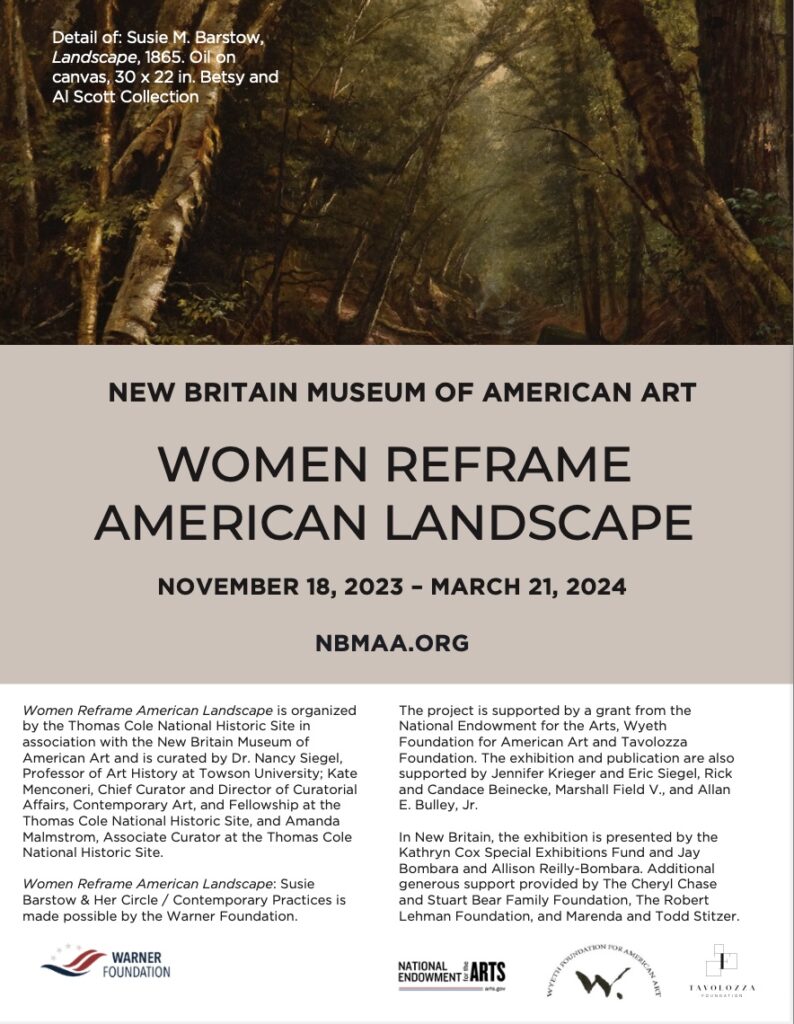 Hallowell, A. Irving. 1926. “Bear Ceremonialism in the Northern Hemisphere,” American Anthropologist 28, no. 1.
Hallowell, A. Irving. 1926. “Bear Ceremonialism in the Northern Hemisphere,” American Anthropologist 28, no. 1.
Herrick, James W. 1995. Iroquois Medical Botany. Syracuse University Press.
Hoffman, Walter James. 2016. “The Mide’Wiwin or ‘Grand Medicine Society’ of the Ojibwa.” In Seventh Annual Report of the Bureau of Ethnology to the Secretary of the Smithsonian Institution, 1885–1886. HardPress.
Johnston, Basil. 1995. The Manitous: The Spiritual World of the Ojibway. Minnesota Historical Society Press/Native Voices.
 Kimmerer, Robin Wall. 2013. Braiding Sweetgrass: Indigenous Wisdom, Scientific Knowledge, and the Teachings of Plants. Milkweed Editions.
Kimmerer, Robin Wall. 2013. Braiding Sweetgrass: Indigenous Wisdom, Scientific Knowledge, and the Teachings of Plants. Milkweed Editions.
Lankford, George E. 2007a. “The Great Serpent in Eastern North America.” In Ancient Objects and Sacred Realms: Interpretations of Mississippian Iconography, ed. F. Kent Reilly III and James F. Garber. University of Texas Press.
———. 2007b. Reachable Stars: Patterns in the Ethnoastronomy of Eastern North America. University of Alabama Press.
Lavin, Lucianne. 2013. Connecticut’s Indigenous People: What Archaeology, History, and Oral Traditions Teach Us About Their Communities and Cultures. Yale University Press.
 Mallery, Garrick. 1972. Picture Writing of the American Indian. 2 vols. Tenth Annual Report of the Bureau of American Ethnology to the Secretary of the Smithsonian Institution, 1888–89, ed. J. W. Powell. US Government Printing Office.
Mallery, Garrick. 1972. Picture Writing of the American Indian. 2 vols. Tenth Annual Report of the Bureau of American Ethnology to the Secretary of the Smithsonian Institution, 1888–89, ed. J. W. Powell. US Government Printing Office.
Noll, Richard. 1985. “Mental Imagery Cultivation as a Cultural Phenomenon: The Role of Visions in Shamanism.” Current Anthropology 26, no. 4.
O’Brien, Frank Waabu. 2010. Understanding Indian Place Names in Southern New England. Bauu Press.
Romain, William F. 2009. Shamans of the Lost World: A Cognitive Approach to the Prehistoric Religion of the Ohio Hopewell. AltaMira Press.
Shoumatoff, Nicholas. 1972. “The Bear Rock Petroglyph Site,” Bulletin of the New York State Archaeological Association 55.
Simmons, William S. 1986. Spirit of the New England Tribes, Indian History and Folklore. University Press of New England.
Speck, Frank G. 1928. “Native Tribes and Dialects of Connecticut: A Mohegan-Pequot Diary.” Forty-Third Annual Report of the Bureau of American Ethnology, 1925–1926. US Government Printing Office.
———. 2018. Bird Lore of the Northern Indians. Forgotten Books.
Spence, Lewis. 1994. Myths and Legends of the North American Indians. Gramercy Books.
Tantaquidgeon, Gladys. 1930. “Notes on the Gay Head Indians of Massachusetts.” Museum of The American Indian Heye Foundation Indian Notes 7.
Thomas, Chad R., Christopher Carr, and Cynthia Keller. 2005. “Animal-Totemic Clans of Ohio Hopewellian Peoples.” In Gathering Hopewell: Society, Ritual, and Ritual Interaction, ed. Christopher Carr and D. Troy Case. Kluwer Academic/Plenum Publishers.
Thwaites, Reuben Gold. 1897. The Jesuit Relations and Allied Documents: Travels and Explorations of the Jesuit Missionaries in New France 1610–1791. Burrows Brothers.
Tooker, Elizabeth, ed. 1979. Native North American Spirituality of the Eastern Woodlands: Sacred Myths, Dreams, Visions, Speeches, Healing Formulas, Rituals and Ceremonials. Paulist Press.
Trumbull, J. H. 1881. Indian Names of Places, Etc., In and On the Borders of Connecticut: With Interpretations of Some of Them. Case, Lockwood, and Brainard.
Tuck, James A. 1976. “Ancient Peoples of Port au Choix: The Excavation of an Archaic Indian Cemetery in Newfoundland.” Newfoundland Social and Economic Studies 17.
Williams, Roger. 1643. A Key into the Language of America, or, An Help to the Language of the Natives in That Part of America Called New-England. Gregory Dexter.
———. 1866. “A Key into the Language of America.” In Publications of The Narragansett Club, ed. James Hammond Trumbull. Providence Press.

